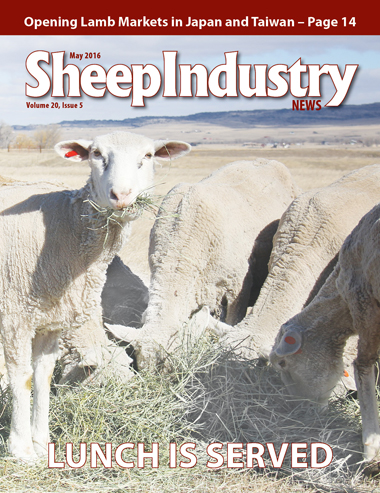The Last Word

Strange Things Are Afoot Online & In Social Media
Kyle Partain
Sheep Industry News Editor
ASI Director of Industry Information Judy Malone and I share the daily chore of scouring the internet for sheep-related news. Some days the news searches are filled with videos of stampeding sheep blocking traffic and great photos. Other days, the searches are filled with stories about congressional legislation and bureaucratic red tape in Washington, D.C.
Can you guess which days I prefer?
Thanks to the advent of social media, we are able to share some of those great photos, videos and stories that might appear to be ripped from a National Enquirer headline with the sheep industry.
Several months back I stumbled across a story about how sheep flatulence forced a cargo plane to make an emergency landing in Bali Denpasar. No idea where that is, but the plane was en route from Australia to Malaysia, so I’m going to guess it’s somewhere in between. Maybe I’ve spent too much time listening to my 10-year-old son’s jokes, but I found the story pretty amusing and quickly shared it on our Facebook page.
Unfortunately, follow-up reports corrected the original story and it was goat flatulence that set off the plane’s smoke alarms. Regardless, that’s not generally the type of story that you’ll see printed within the pages of the Sheep Industry News. Our scant 32 pages are filled with more congressional issues than you can shake a stick at, and don’t usually leave room for stories such as the one mentioned above.
This reminds me of If I Ever Get Back to Georgia, I’m Gonna Nail My Feet to the Ground by former Atlanta newspaper columnist Lewis Grizzard. The book provides insight into how large metro newspapers worked back in the 1970s and 80s.
“Then the city editor will come forward with the local stories of the day: City council is studying a proposal to sell the entire town and all its citizens to the Japanese; something ate an entire garbage truck and Lon Dinkle’s pitbull, Skippy, is the prime suspect; and a sinkhole swallowed the bowling alley and the entire Pin-Busters team.
“The managing editor will decide all these stories are much too interesting for the front page and the editors will be told to go back and find a lot of stuff about South Yemen and rezoning hearings.”
Had the internet and social media existed in Grizzard’s day, you can bet those more interesting stories would have found a home on the newspaper’s website or Facebook page. If you think such stories make for a light, entertaining read, then I’d like to suggest that you check out our social media sites on a daily basis.
Much like Vincent Van Gogh preferred oils, my preferred medium is Facebook. It works well with photos, videos and links to in-depth stories about things such as sheep appearing on stage in an opera in New York City (another story we linked to recently online). In case you missed it, Cassie Schweighofer, a sheep producer at Twin Brook Farms in Tyler Hill, Pa., provided the sheep.
The New York Times wrote, “Schweighofer said that she thought their biggest adjustment once they returned to Pennsylvania would not be the lack of the limelight, but returning to their old hay diet after getting so much grain backstage.”
“I think that they’re going to put up their noses at us for the first day,” she said in the story written by Michael Cooper in late March. “But I think after a few days, they’ll fall back into the regular old farm routine. That’s the beauty about sheep.”
I couldn’t make up stories this interesting if I tried, and yet there’s rarely space for such stories in the magazine. So, we turn to social media to spread the word. I don’t care much for Twitter, but I’m trying. I’m a writer, so I find it difficult to say much in 140 characters – which is all you’re allowed in each tweet. Instagram is a photo and video-based outfit that doesn’t work well for sharing links to stories online. At various times during my daily schedule, I will post to any or all of these social media sites.
There are 80,000-plus sheep producers in the United States according to the U.S. Department of Agriculture’s latest numbers. And yet, we have only about 4,000 followers on our Facebook page. We see even less participation on Twitter and Instagram.
So, this is your warning. If you aren’t on social media with us, then you’re missing out on some great stories that you might not find anywhere else.


